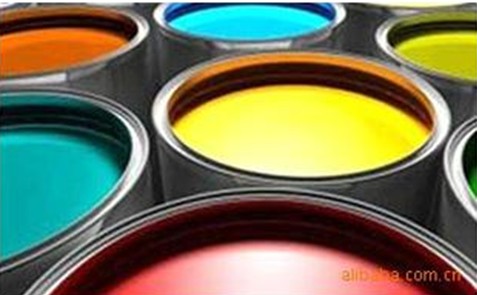Plastic powder particle size control
Plastic is a synthetic polymer compound polymer, also known as polymer or macromolecule, which is also commonly referred to as a resin, which can freely change the shape of the body. It is a material obtained by polymerizing a monomer raw material by synthesis or condensation reaction, and is composed of an additive such as a synthetic resin and a filler, a plasticizer, a stabilizer, a lubricant, and a colorant. Plastics are divided into thermoplastic and thermoset types. The thermoplastic type is that the material softens after heating, and hardens to become the shape we need after cooling, and can be repeatedly softened and molded. After the thermosetting type is heated, it will condense into a certain shape. When it is reheated to a certain extent, the internal structure of the molecule will be destroyed, and one or more of the elements will be released and become other synthetic bodies.
The particle size distribution of the plastic powder depends on the production equipment and production process parameters used to manufacture the powder, and the type and system are different, and the particle size distribution controlled by the powder type is also different. Since electrostatic spraying requires the powder to have not only a very uniform composition but also a proper particle size distribution, it is preferred that the sprayed powder has a particle size of between 10 and 70 microns. Jinan Micro-Nano Particles Instrument Co., Ltd. is a high-tech enterprise integrating R&D, production and sales of particle testing instruments and equipment. Products are widely used in the plastic powder industry. With its excellent quality and strong technical support and services, it has won praises from users. WINNER2000ZD wet laser particle size analyzer has been tested for more than ten years and has been widely used in the plastic powder industry. It is also one of the most popular particle size analyzers on the market.


In general, the smaller the particle size of the powder, the better the leveling property of the coating when it is cured, and the smoother and smoother the appearance of the coating film, but the chargeability of the powder is proportional to the square of the particle size, the powder is less charged, and the construction efficiency is lowered. It will fall, ultra-fine powder (particle size < 10 μ m ) is basically not charged, and the powder is too thin to increase the difficulty of powder production. Typically the fine powder, in particular too micropowder content of 10 μ m or less, the powder easy to absorb moisture, agglomeration, stability decreases, it will use the gun clogging, poor powder discharge phenomenon.
Some plastics can directly obtain plastics in powder state by crystallization in the synthesis process. In the plastic powder particles, the coarse powder refers to a powder of 5 to 60 mesh, and the medium powder refers to a powder of 60 to 160 mesh . Fines 160 mesh to 300 mesh, 300 mesh belonging to the above ultra-fine powder. However, according to the degree of easy crushing of different raw materials, the classification of coarse, medium, fine and superfine is different. For some compounds such as calcium carbonate, 300 mesh can only be regarded as coarse powder. The ultra-fine and uniform particle size plastic powder overcomes the defects of other powder particles, the uniformity of the coating surface, the superiority of light transmission and reflective properties, so the ultra-fine powder particles are more and more widely used in the future.
For general thermosetting powder coatings, the thermosetting resins used have higher curing temperatures (180 to 220 °C ) and longer curing times (10 to 30 minutes) , which limits their use only to heat-resistant substrates such as metals. High energy consumption and time consuming. The photocuring is cured by UV radiation, which can make the receipt and curing temperature as low as 100 ~ 120 °C, much lower than the traditional heat curing powder coating and use temperature, so as to avoid excessive heating of the substrate, so that it can be used in wood , plastic and other occasions.
In recent years, foreign countries have done a lot of research work on the application of powder coatings for automotive coatings, and have made great progress in the synthesis of resins, the manufacture of powders and the coating technology. The synthesis of resins is investigating outdoor anti-aging and anti-fading new epoxy resins, as well as improving the surface smoothness of acrylic and polyester resin composite coatings. As environmental protection requirements become more stringent and powder coating technology continues to improve, the application of powder coatings will become more widespread.
Jinan Taifeng Qihui Plastic Powder Co., Ltd. (formerly Jinan Powder Coating Factory) was established in 1985 , specializing in the production of thermosetting powder coatings. The factory uses WINNER2000ZD (Jinan Micro-Nano Particles Co., Ltd.) laser particle size analyzer for product testing. It is available in several types of products, such as epoxy polyester hybrid, pure polyester, fine art, and metal. For the rest, the production of outdoor pole powder, automotive industry powder, building materials powder, radiator powder and arts and crafts powder are widely used.
Greenhouse Vertical Hydroponics
Greenhouse Vertical Hydroponics allows you to grow fresh vegetables and fruits at much higher crop yields and relatively lower costs. Thus, not only is it a profitable undertaking, but one which has proven of great benefit to humanity. With Greenhouse Hydroponics, plants can be raised out of season resulting in better control and higher yields of crops.
Greenhouse Vertical Hydroponics,Hydroponic Growing,Vertical Hydroponics
JIANGSU SKYPLAN GREENHOUSE TECHNOLOGY CO.,LTD , https://www.engreenhouse.com